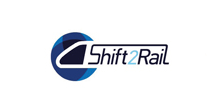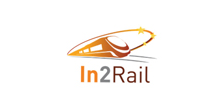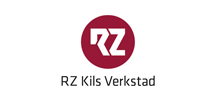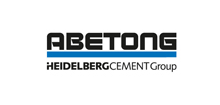The winter is one of the railroad’s worst enemies
In recent years, the interest in using railroad transport has not been as great as when it was first introduced in the 19th century. The railroad still represents a core component in the infrastructure and binds society together. Reliable and lasting rail systems that allow efficient transport is therefore of great importance. However, the weather constantly subjects them to severe strain, leading to astronomical costs and a very annoyed public especially. Snowfalls and icicles may be idyllic as far as nature experiences are concerned, but they are literally obstacles to railroad transport – especially the switches.
Snow and ice cost large amounts of money
The Swedish railroad network has 12,300 switches – on average, 1.3 switches are used for 1 kilometre of railroad. Over half of these switches – 7,000 – are electrically heated due to the risk of snow. The state’s total cost is SEK 750 million, of which snow clearance accounts for SEK 460 million. More than half of the maintenance cost is related to problems caused by snow.
Maintenance cost per switch in Sweden
Total cost: approximately SEK 65,000*Consisting of::
Ice/snow clearance: SEK 35,000 (EUR 3,500)
Manual work: SEK 17,000
Electrical heating: SEK 8,000
Other snow protection: SEK 1,000
Non-snow related cost: SEK 30,000
* Average value of calculated cost: EUR 5,500- 7,700 per year
Total maintenance cost of switches in Sweden
Total cost: approximately SEK 800 millionConsisting of:
Ice/snow clearance: SEK 400 million
Electrical heating: SEK 60 million
Non-snow related cost: SEK 340 million
Delays are even more expensive
Although maintenance costs are high, delays are even more expensive to society. The average number of delay hours in recent years is 39,000 per year, which leads to additional costs in the form of replacement services, staff etc. amounting to SEK 5.5 billion. Thus, every hour of delay leads to a cost of SEK 140,000 for the state!
The Swedish National Audit Office has calculated that almost 60 % of all delays are caused by infrastructure problems, i.e. tracks, switches, wires etc. The Swedish Transport Administration states that snow and ice was the main cause of delays in 2009 and 2010. Switch-related problems accounted for SEK 660 million of the total cost of delays, of which SEK 110 million can be attributed to snow and ice-related problems.
Costs of delays
39,000 h = SEK 5.5 billion (EUR 550 million)Caused by switch problems
4,500 h (12 %) = SEK 660 million (EUR 66 million)
Caused by snow
650 h (14.5 %) = SEK 110 million (EUR 11 million)
In Great Britain, the cost of delays in 2006-2007 was estimated at GBP 1 billion and 42 % of the problems were related to infrastructure, in which switches are an essential component. If Sweden and other countries would be able to find new technology that makes switches resistant to cold climate, snow and ice, enormous costs would be saved, which would enable investments in other areas instead.
The problem with conventional railroad switches
Railroad switches have basically been based on the same technology that was first used in the 19th century, where a point blade is moved horizontally and connects to the inside of the rail. Although the construction is robust, the functionality is vulnerable since snow and ice easily gets stuck in between the parts, which incapacitates the switch. If it lacks a heating or other protection mechanism, snow has to be cleared away manually with shovels and spits, which is an emergency measure that costs time and money, and causes delays and problems for both passengers and companies.
The revolutionary vertical method used in the Vertex switch means that the surfaces on which snow and ice accumulates in existing switches are eliminated (c.f. technical description). The concept also works in conventional crossings without moveable point blades.
Market potential
There are just over 1,275,000 switches in the world – 445,800 in Europe and 12,300 in Sweden. The switch density is the same all of the world, approximately 1.3 per kilometre. Every year, 12,800 switches are replaced globally, 4,360 in Europe and 150 in Sweden.
If all markets would completely replace their conventional switches with the patented vertical Vertex switch, the annual sales value in Sweden would be EUR 10 million, EUR 350 million for Europe and EUR 1 billion for the entire world.
IN PARTNERSHIP WITH










